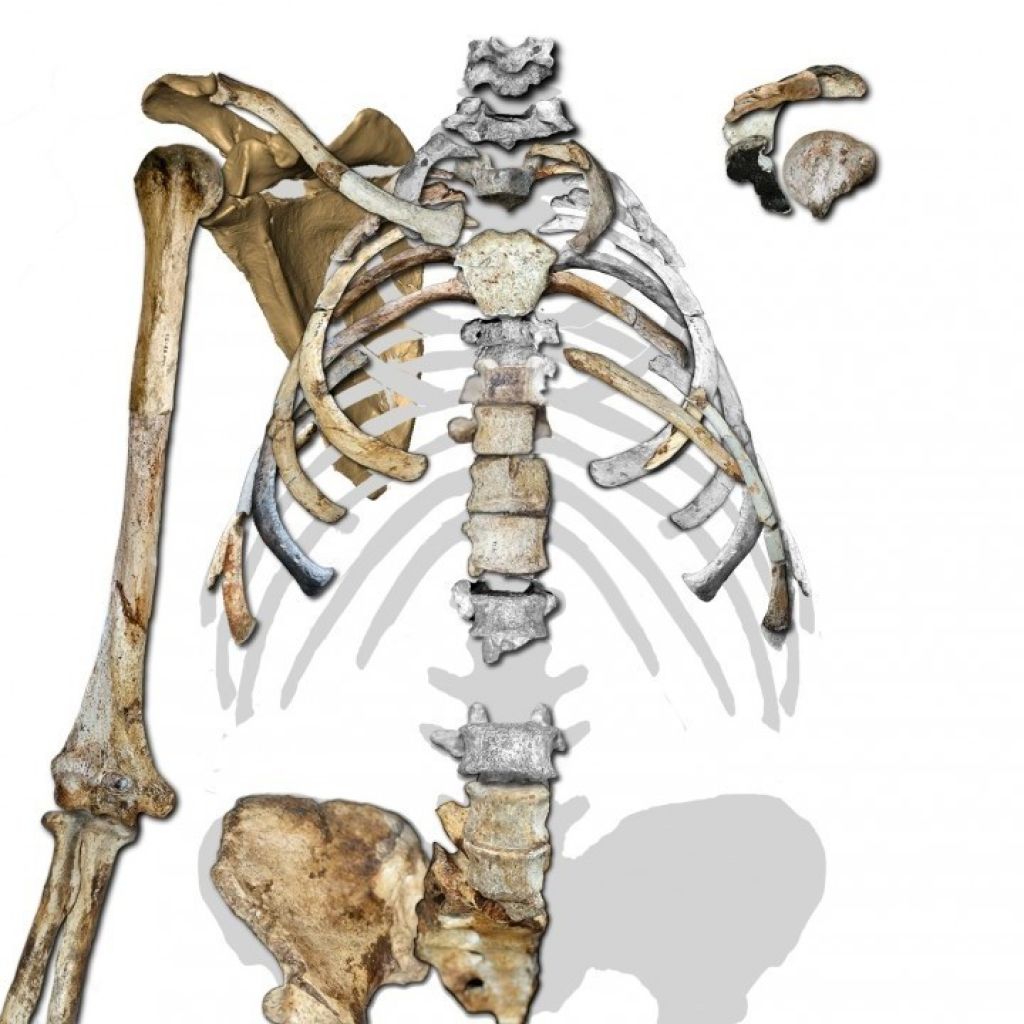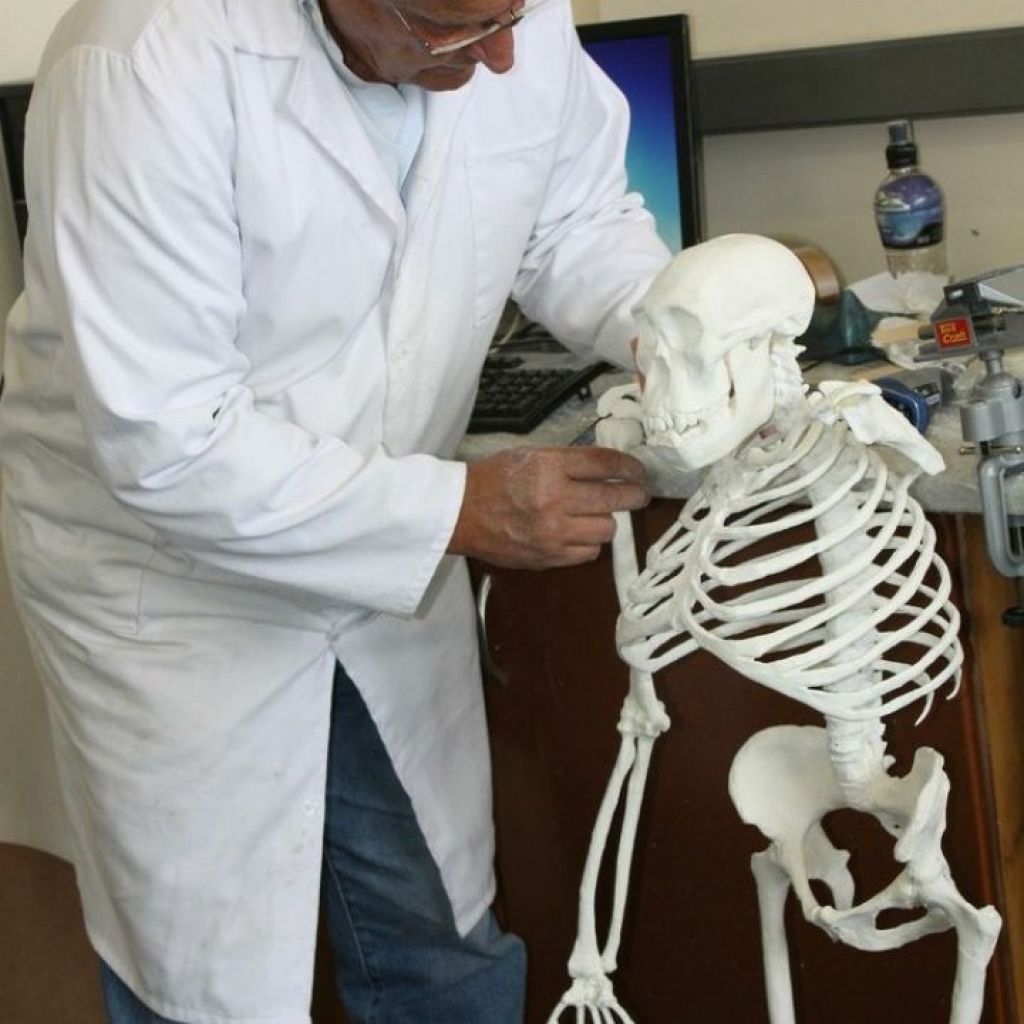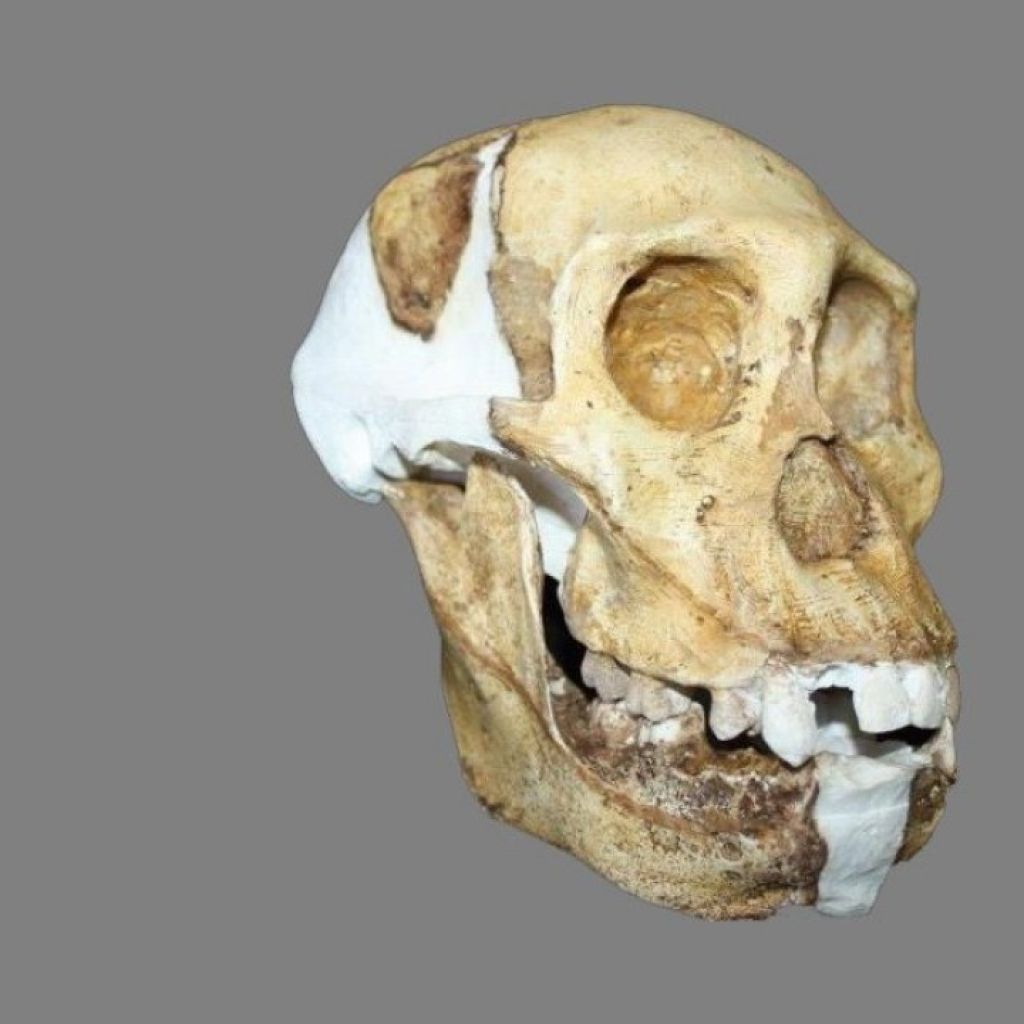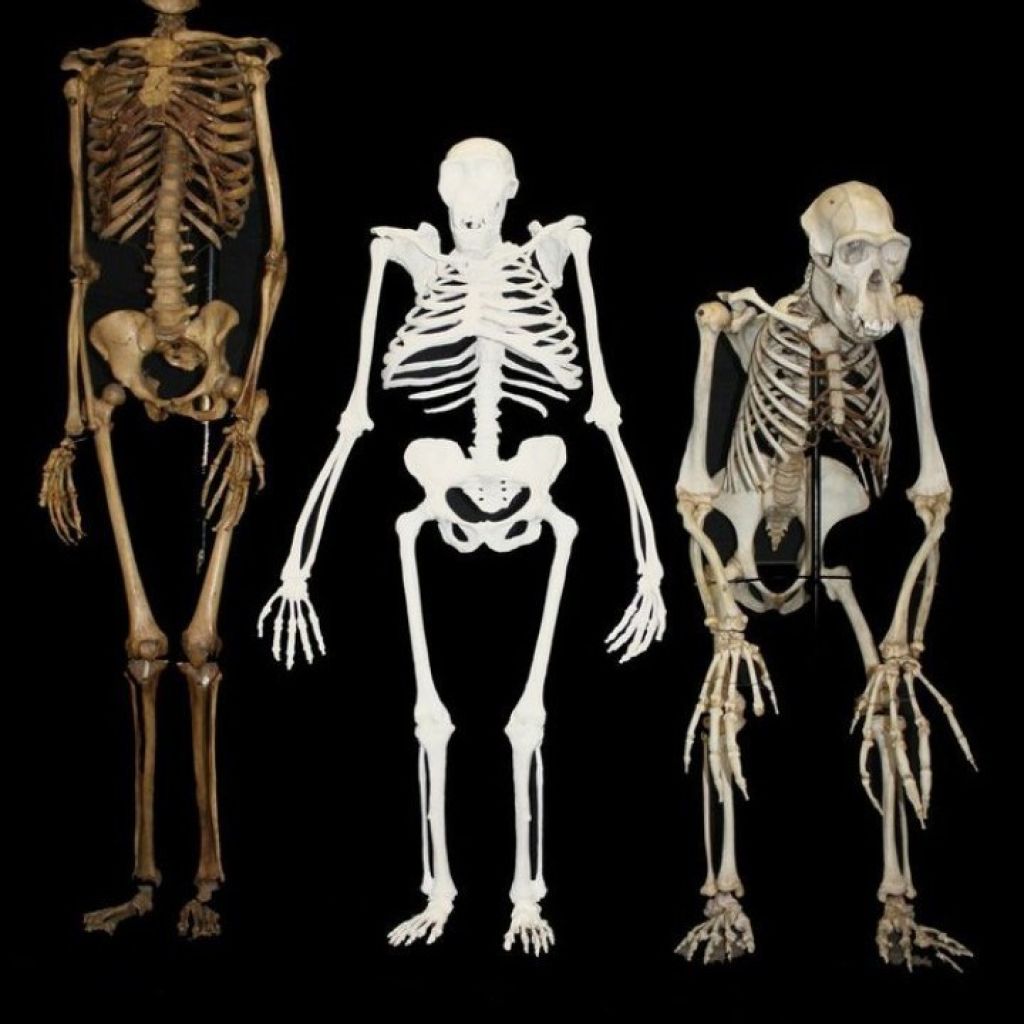Pertinent questions asked about Australopithecus sediba discovery

The recent revelations surrounding Australopithecus sediba certainly have people talking. Here, the leading researchers in the discovery answer some of the essential questions …
Concerning the dentition
Professors Joel Irish (the Research Centre for Evolutionary Anthropology and Palaeoecology, Liverpool John Moores University) and Darryl de Ruiter (Department of Anthropology, Texas A&M University and the Evolutionary Studies Institute, University of the Witwatersrand) provide an overview of the six papers from Science pertaining to an analysis of the dentition.
What did your research into the mandibles of Australopithecus sediba tell you?
Several of our colleagues were not convinced that Australopithecus sediba was different enough from the better-known Australopithecus africanus to warrant naming a new species. They thought that perhaps we were only looking at a smaller variant of Australopithecus africanus. Our study showed that the mandibles of Australopithecus sediba differ significantly in both size and shape from those of Australopithecus africanus, providing strong support for our assertion that Australopithecus sediba is something new and unique. We also showed that the ontogenetic growth trajectory of Australopithecus sediba was unique, meaning that their growth pattern was different from Australopithecus africanus.
What are the broader impacts of your research? What does it tell us beyond Australopithecus sediba?
As is seen elsewhere in the skull and skeleton of Australopithecus sediba, the mandibles share some characteristics with australopiths, and some with early Homo. This marks Australopithecus sediba as a transitional form, which is exactly what would be predicted in Darwin’s theory of evolution by natural selection. The changes taking place in the skull and skeleton of these individuals are exactly those changes that ultimately lead to us humans. Understanding the ecological, environmental and evolutionary pressures that brought about these changes will help us to understand not only where we come from, but what makes us so unique in this world.

Concerning the upper torso
Professor Steve Churchill (Department of Evolutionary Anthropology at Duke University and the Evolutionary Studies Institute, University of the Witwatersrand) looks at the upper torso.
What can we learn from these upper-limb remains?
There is a long-standing debate in human evolutionary studies about the extent to which australopiths were relying on trees as a part of their behavioural ecology. In Australopithecus sediba we see upper limbs that were relatively long and that had elongated forearms, a shoulder joint that was somewhat upturned, an obliquely oriented scapular spine, and pronounced attachment markings for some of the upper-limb muscles. In combination, these features reflect an upper limb that was well adapted to the arm movements involved in climbing and suspension (hanging below branches). Furthermore, Australopithecus sediba displays a few details of upper-limb anatomy, such as curved finger bones, that in apes do not appear developmentally until youngsters start climbing (and would not develop at all if no climbing occurred). These features all suggest that Australopithecus sediba regularly climbed trees.
Concerning the spine
Dr Scott Williams (Center for the Study of Human Origins in the Department of Anthropology, New York University) responds to questions about the spine.
What can the spine tell us about upright walking in Australopithecus sediba?
Human-like bipedal walking involves balancing the torso in an upright posture over two legs. This unusual way of getting around leaves its mark on the anatomy of the legs, hips and feet, and also on the vertebral column. An important feature of the vertebral column related to upright walking is an S-shaped curve of the spine, including a marked curvature of the lower back called lumbar lordosis. The lumbar vertebrae of sediba are wedged and help create this curve. In addition, there are other bony indicators of postural lordosis.

Was the vertebral column of Australopithecus sediba similar to or different from our own?
Both. Our findings suggest that sediba probably had the same regional and total numbers of vertebrae as we do, but had more vertebrae that are shaped to allow forward and backward bending of the spine. To us, this indicates that Australopithecus sediba had a more mobile and flexible back than the average modern human.
Additionally, the degree of wedging observed in the last lumbar vertebra of MH2 is extremely high and nearly outside the range of modern human variation. This is consistent with findings by our colleagues working on the lower limb (hip, legs and feet) and suggests that Australopithecus sediba might have carried itself and walked differently than modern humans normally do.
Concerning the thorax
Dr Peter Schmid (the Evolutionary Studies Institute, University of the Witwatersrand and the University of Zurich (retired)) talks about the thorax.
Could Australopithecus sediba run?
Most animals, no matter what their form of locomotion, have some sort of running gait that can be used when greater speed is needed (as when capturing prey or avoiding predators), and Australopithecus sediba was likely no exception. The conical thorax of Australopithecus sediba would not have prevented them from running, but it does suggest that they were not capable of long-distance, endurance running (in which arm-swinging is an important energy-saving device).
What is the significance of an ape-like, conical upper thorax?
The narrow upper ribcage of apes appears to be important in allowing a wide range of motion of the scapula (shoulder blade) needed for climbing and suspension (hanging below branches). Thus the conical shape to Australopithecus sediba’s thorax could be seen as consistent with the evidence from the upper limb that suggests that this species still engaged in a significant amount of arboreal locomotion.
It is also important to note that a conical rib cage makes it difficult to engage in arm-swinging during bipedal walking and running. In humans, our trunk naturally twists towards the opposite side as our swinging leg moves forward with each step (or running stride). While we could use the muscles on the sides of our abdomen (the abdominal obliques) to counter this rotation, it is energetically more efficient to counter-swing our arms (that is, to swing the opposite side’s arm forward, which produces a countering twist on the upper thorax). Because humans have a thorax that is broad at the top, the arms are positioned well out towards the sides, and better able to swing freely without striking the sides of the body. Thus the conical rib cage in Australopithecus sediba suggests that they were not as proficient at the kind of striding bipedalism and running that characterises modern human locomotion.

Concerning the lower limb
Dr Jeremy DeSilva (Boston University and the Evolutionary Studies Institute, University of the Witwatersrand) covers the lower limb.
How do we know that Australopithecus sediba walked on two legs?
Human leg bones differ from the bones of other primates in ways that are related to upright walking. For instance, humans are knock-kneed, meaning our knees are directly under our bodies and almost touch. But we are not born with knees like this. Instead, the end of our femur begins to angle as we begin to walk on two legs as toddlers. Because this angulation only happens in individuals who walk on two legs, finding it in a fossil is strong evidence for upright walking. Australopithecus sediba possesses this angled femur. Other anatomies that we can see in the back, pelvis, hip joint and ankle of Australopithecus sediba are found only in upright-walking humans as well.
Does that mean Australopithecus sediba walked like a human?
No. The heel of Australopithecus sediba is chimpanzee-like, meaning that this species did not heel-strike during upright walking the way that most modern humans do. In fact, the heel of Australopithecus sediba is even more ape-like than the heel of earlier hominins attributed to Australopithecus afarensis (Lucy’s species).
So, how did Australopithecus sediba walk?
We propose that Australopithecus sediba was a “hyper-pronator”. The heel bone indicates that Australopithecus sediba contacted the ground on the outside of an inverted, or twisted-in, foot. Contacting the ground on the outside edge of a twisted-in foot causes the foot to rapidly and excessively rotate so that the inside (big-toe side) of the foot is driven into the ground (pronation). This begins a chain reaction in which the shinbone rotates inwards, the femur rotates inwards, and the torso pitches forward a bit.